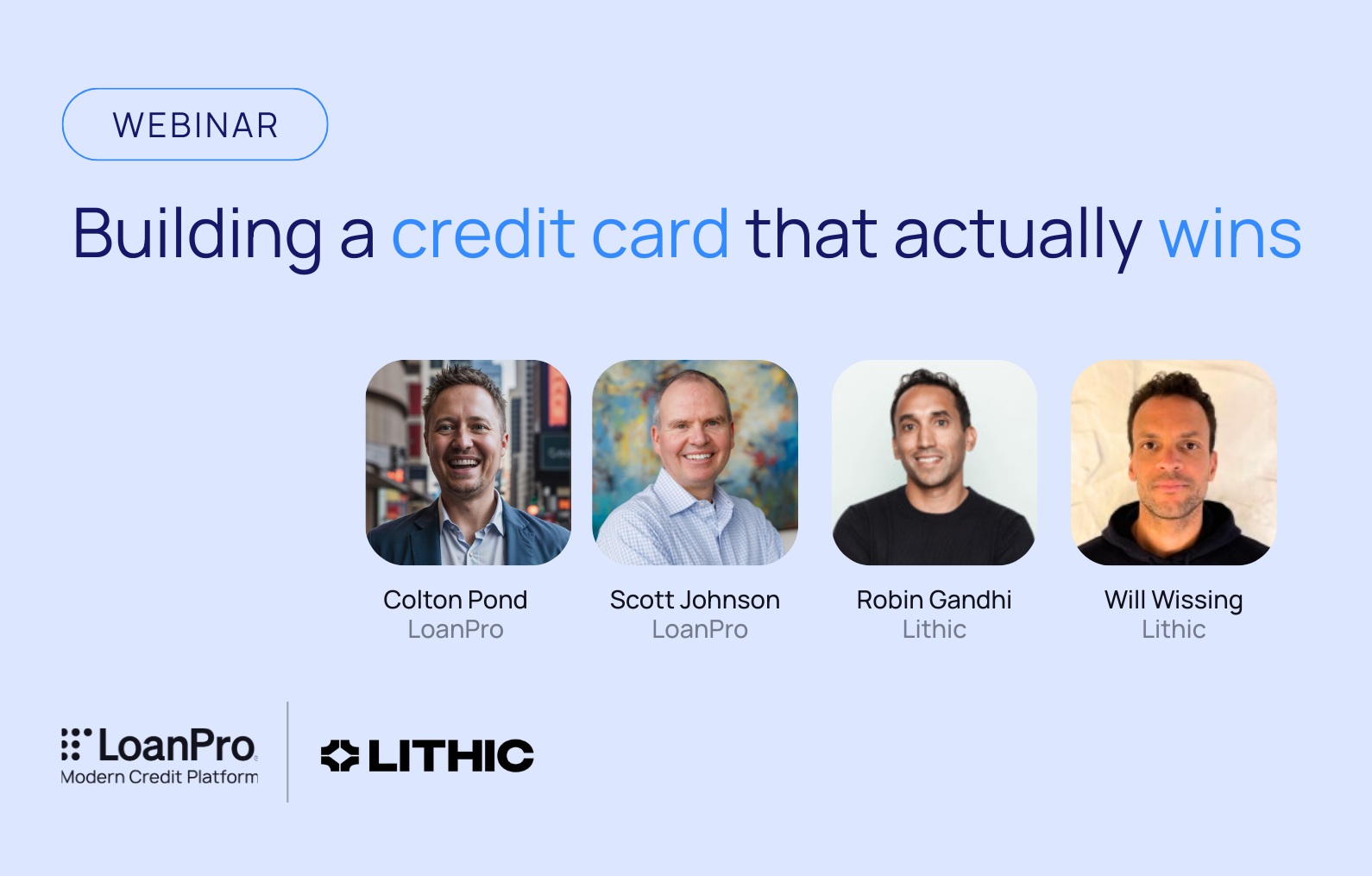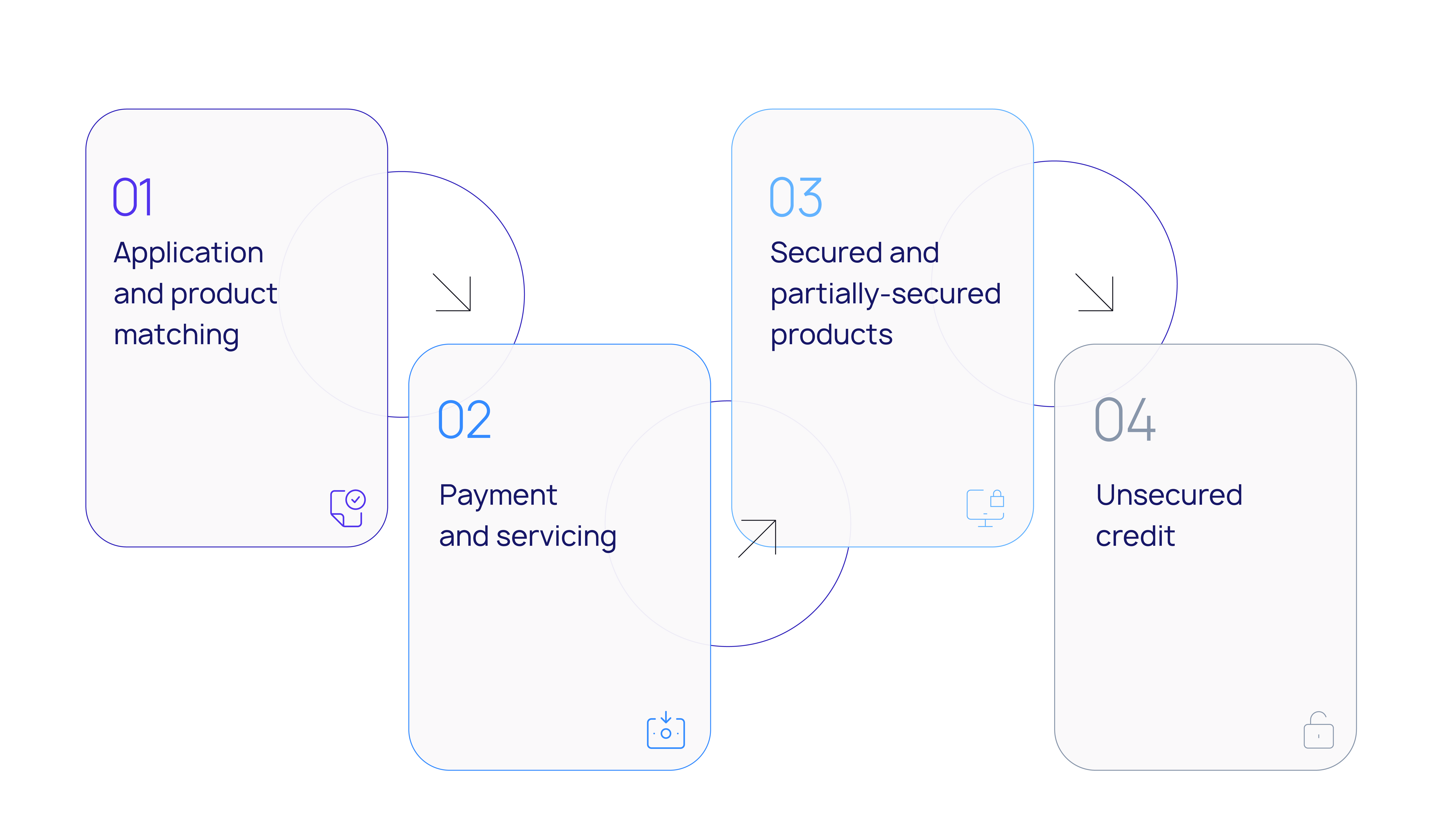Deliberate and emergent strategies
This post was written by LoanPro’s Co-founder and CEO, Rhett Roberts. To hear more of his story and thoughts on the industry, check out some of the podcasts he’s been a guest on in our content hub.
When we tell stories of successful business and entrepreneurs, we tend to mythologize the unwavering vision of a single, brilliant mind, with stories like Thomas Edison setting out to create the lightbulb and trying thousands of possible filaments until one finally worked. When we tell stories about a business changing their strategy, they tend to be prologues to the real success story—Did you know Coca Cola sold cough syrup before they invented the soda? An interesting factoid, but not much of a replicable recipe for success.
But those stories of companies changing course are often more nuanced and more instructive than a one-sentence anecdote. When businesses recognize an opportunity before them and alter their approach, they can meet or exceed their original goals.
In his book How Will You Measure Your Life, Clayton Christiansen of the Harvard Business School highlights one striking example of a company successfully developing a new strategy that emerged from their situation—not pivoting away from their original plans, but creating a new strategy to meet them. Reading that story, I was reminded of my own, and the many twists and turns that have led LoanPro to where it is today.
Big ideas and small motorcycles
In 1958, Honda decided to expand their motorcycles from Japan into international markets. Their research showed that Southeast Asia and Europe were easier targets, as America was the land of the automobile. Management, however, decided to expand into the US—if they could win in America, the capital of the free markets, then they could win in the rest of the world.
It was a bold and deliberate strategy, and one rife with obstacles. They had to repeatedly negotiate with the Japanese Ministry of Finance before they could even begin doing business in the US. Once they opened up shop, they faced the postwar perception that a Japanese company couldn’t produce quality products. The American motorcycle market had been stagnant for years, with competitors struggling to sell to consumers who simply preferred cars.
Most competitors were selling large, heavy bikes, with engines that were 500cc or more. Honda launched two large bikes of their own—Dream and Benly—as well as a smaller bike, the 50cc Super Cub. Sales were slow, only selling 170 units before 1960. To make matters worse, many units were defective, and Honda decided to recall, sending them back to Japan for repairs.
A surprising development
With sales slumped, the cash-strapped American Honda noticed something interesting. As their employees ran errands, they typically took the lightweight Super Cub, and also rode it to the hills above Los Angeles. A buyer from the Sears catalog noticed and contacted Honda about selling the Super Cub. Honda at first balked at supplying their smallest bike; their plan had been to compete with the bigger “American bikes”. But with sales stagnant, they relented to the buyer.
Others soon noticed as well. Unified with a clever marketing campaign of the “Nifty, Thrifty, Honda-Fifty”, the Super Cub began to flourish. By 1962, American Honda was selling more than 40,000 motorcycles annually.
Having gained American consumers’ trust, they were then able to expand into other products and the rest of the international market, eventually becoming the global leader it is today.
Deliberate and emergent strategies
So what is the lesson to draw from Honda? Returning to the framework Clayton Christensen presented, these strategies can be thought of as either “deliberate” or “emergent”. A deliberate strategy is what a business sets out to do—like selling a particular product. As a company pursues its deliberate strategy, it can use feedback loops to discover what’s working and what isn’t, developing an emergent strategy that takes everything they’ve learned into account.
The pattern looks something like this:
- Create a deliberate strategy, begin execution towards that strategy with an open mind.
- Turn your weaknesses into your advantage.
- Don’t over-plan when doing the unheard of things.
- Don’t let assumptions blind you to disruptive opportunities
This aligns with other expert analysis on Honda. Richard Pascale argued that “(Honda’s) success, as any Japanese automotive executive will readily agree, did not result from bold insight by a few big brains at the top. On the contrary, success was achieved by senior managers humble enough not to take their initial strategic positions too seriously… The Japanese don't use the term “strategy” to describe a crisp business definition or competitive master plan. They think more in terms of “strategic accommodation”, or "adaptive persistence,” underscoring their belief that corporate direction evolves from an incremental adjustment to unfolding events.”
LoanPro
As I read Christensen’s book, I thought about my own journey with LoanPro, from the earliest deliberate strategies my brothers and I had to the long series of emergent strategies that took us to where we are now. That experience has helped shape our team and platform.
Deliberate beginnings
LoanPro’s history begins with my brothers and I. We were serial entrepreneurs from our youth, always looking for ways to make customers happy and make ourselves money. Through high school, we mowed lawns, and scaled up our operation to the point that we could mow 110 lawns in three days. Other businesses came as we saw the opportunity—dutch oven catering, professional cleaning services, repairing rock chips on car windshields.
With money from the lawn mowing business, we eventually opened our car dealership. We admittedly weren’t experts on automobiles, but focusing on reliable cars with healthy margins, we made enough money to stay in business, albeit only taking barely enough to feed our families.
To grow our business, we decided on a deliberate strategy: in-house financing. Customers appreciated the benefit of in-house financing, driving up sales. What’s more, the financing helped us become more stable. Rather than having two massive peaks from Christmas and tax returns, our revenue was spread throughout the year, helping us keep the business running smoothly year round.
As we expanded, we realized that we needed to upgrade our loan management software. But we were picky. None of the legacy solutions seemed like they could keep up with our growth. Still focused on our primary goal of building the auto lot, we decided to develop our own software. It was a long, difficult process, but to make a long story short, it worked. We called our system AutoPal, and before long we were growing our portfolio and improving our margins.
Emergent opportunities
At auto shows and other industry events, other dealers noticed we were thriving even amid the recession. We attributed the success to our new loan management software, and encouraged them to do the same. What surprised us, though, was that other automotive lenders didn’t just want to follow in our footsteps and create their own system—they wanted to license AutoPal from us.
This was our moment like Honda and the Sears catalog buyer. We sold cars, not software, and had never even considered licensing it out when we built it. We started to recognize the opportunity before us. Rather than just helping our own business, we could make a far wider impact, improving the financing experience for lenders and borrowers alike. And with new technology like AWS (we were one of the first 100 companies using it) we could build a modern system that wouldn’t grow outdated like the legacy platforms had.
We decided to license AutoPal to other companies (who at that point were all our competitors in the automotive lending space). Before long, we were rebuilding the platform so it could support not just automotive loans, but any kind of credit product. Our new system, LoanPro, was launched. It was a massive improvement over AutoPal, but the changes from that initial launch to what we have today are just as dramatic. LoanPro has never slowed down, and the developments we’ve launched in the last few years—like transaction level credit—are empowering our clients to launch first-of-their-kind credit products.
LoanPro’s values
If we had decided that selling software was a step too far from our real goal and mission of selling cars, then we would have never seen the success we’ve now reached. What’s more, our customers would still be using systems that limit their scaling, rather than using LoanPro to provide an award-winning customer experience.
The lessons of an emergent strategy are expressed in two of our core values:
- We believe the best ideas come from a tapestry of informed perspectives and participants.
- We believe that the best results come from thoughtful collaboration, ideation, exploration, feedback loops, iteration, grit, and Execution Mindset.
Just like Richard Pascale said of Honda, our success hasn’t come from some perfect strategy that my brothers and I developed twenty years ago. It’s emerged from hundreds of minds as we’ve worked together to build something special.
I’m fond of saying that our greatest accomplishment hasn’t just been building the machine—our credit platform—but the machine that builds the machine: our people, from the designers and developers creating the system itself to the account managers and customer success teams who make it work for each client. That emergent strategy is what brought us to this point, and it’s what will continue to drive us forward as we build the platform to innovate the future of finance.
To hear more from Rhett Roberts, check out his podcast appearances linked in our content hub. And to see LoanPro in action, schedule a demo with us. We’d love to show you how it works.





